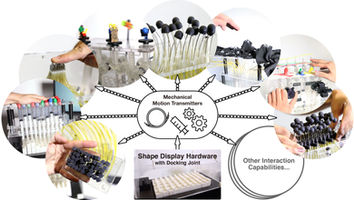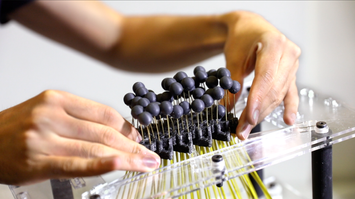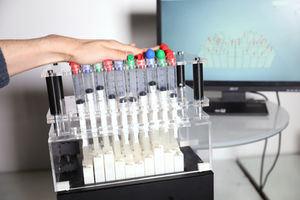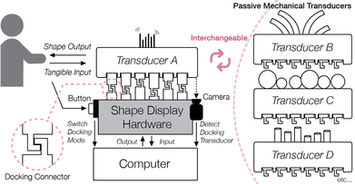
2020
TRANS-DOCK
Shape Displays with Interchangeable Transducers
Ken Nakagaki, Yingda (Roger) Liu, Chloe Nelson-Arzuaga and Hiroshi Ishii
About
In the research realm of shape changing interfaces in Human-Computer Interaction, a variety of pin-based shape display designs have been proposed. Using the hardware, researchers have explored and validated a range of applications for tangible and haptic interactions. While a variety of technical configuration for such shape display hardware has been explored (e.g., resolution, sizes, motion modalities), the interactivity that a single shape display hardware can offer is limited with its hardware configuration.
TRANS-DOCK is a docking system for pin-based shape displays that expand their interaction capabilities for both the output and input. By simply interchanging the transducer modules, composed of passive mechanical structures, to be docked on a shape display, users can selectively switch between different configurations including display sizes, resolutions, and even motion modalities such as rotation, bending, and inflation.
In our paper accepted to TEI 2020, we introduce a design space consisting of several mechanical elements and enabled interaction capabilities. Our proof-of-concept prototype explores the development of the docking system based on our previously developed 10 x 5 shape display, inFORCE. A number of transducer examples are shown to demonstrate the range of interactivity and application space achieved with the approach of TRANS-DOCK.
In addition to the prototypes, we introduce potential use cases that take advantage of the interchangeability of TRANS-DOCK including education, entertainment, and prototyping interfaces. For example, TRANS-DOCK can be used for museums or schools which require a variety of tangible learning contents where different transducers can be selected. For gaming, users can switch between different physical interfaces to switch the contents for a game with physical I/O. For interface designers, TRANS-DOCK could be a platform to quickly iterate and compare different types of actuated interfaces without building them from scratch.
Through TRANS-DOCK, we intend to expand the expressibility, adaptability, and customizability of a single shape display for dynamic physical interaction. By converting arrays of linear motion to several types of dynamic motion in an adaptable and flexible manner, we advance shape displays to enable versatile embodied interactions for a variety of digital/physical everyday applications.
*This project was conducted at Tangible Media Group, MIT Media Lab. project page
Exhibitions
Gallery















